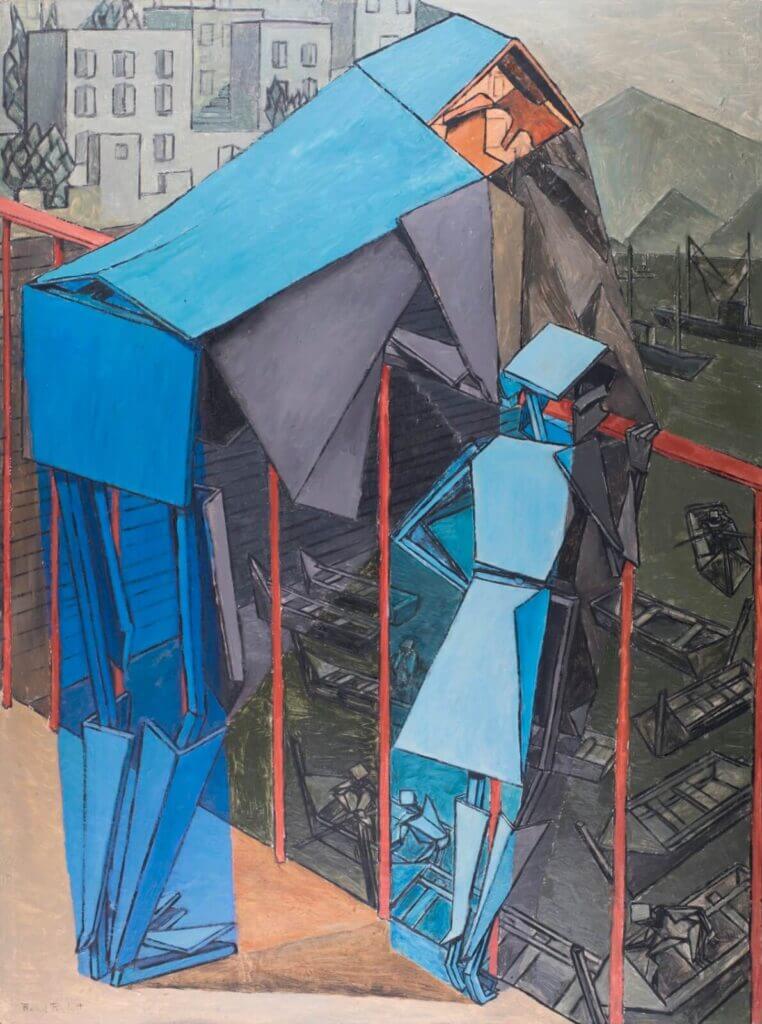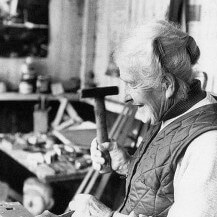Father and child above a harbour with Maltese Fishing Boats below, 1960
Your currently viewing RAW Modern | Switch to RAW Contemporary
Father and child above a harbour with Maltese Fishing Boats below, 1960
Catalogue essay by Blanche Llewellyn
Between 1957 and 1962, Rachel Reckitt embarked on a series of travels to Greece, Italy, France, Ireland, Malta and Galicia, countries which inspired her artistic output.During her time in Malta, which was then a British colony, Reckitt particularly loved to observe the fishermen, who still operated from traditional Maltese open boats named Iuzzu, and hauled in their nets by hand. During the same period she depicted Irish fisherman – emphasizing the similarity between the two in the degree of physical labour required for this livelihood. In her sketches, the fishermen are only distinguishable by their footwear: the Maltese bare-footed and the Irish with enormous boots.
In the 1960s, Reckitt transitioned into a constructivist phase, often depicting local scenes represented in an abstracted manner. In addition to paintings, she also produced sculptures, collages and reliefs – often using steel, metal, wood, sand, paint and tesserae.
In this painting, the two figures are inspired by this new fascination with materials as the two silhouettes appear to be crafted with iron sheets. Opting for tempera over oil paint, Reckitt accentuated the boldness of the blue colour. This technique, prevalent from the 12th to the 15th century, was rather uncommon in the 1960s – reflecting Reckitt’s penchant for utilizing unconventional materials to nurture her creative impulses.
The remainder of the canvas – sharp, jagged mountains, square buildings and blockish fishermen – adopts a cubist style giving a harsh aspect to the painting. Nonetheless, there is a profound sense of tenderness conveyed between the father and his child.

